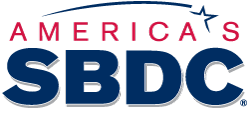By Mrigank Mishra
 If intellectual property (IP) was a rock band, then a patent would definitely be the lead singer. This is not to say they are better than other forms of IP, just the face of it, and an important one if applicable to your IP. An investor is more likely to be impressed with an IP portfolio with patents than without.
If intellectual property (IP) was a rock band, then a patent would definitely be the lead singer. This is not to say they are better than other forms of IP, just the face of it, and an important one if applicable to your IP. An investor is more likely to be impressed with an IP portfolio with patents than without.
But it is a hard application to both file and be granted, requiring in-depth research and sometimes years before the US Patent and Trademark Organization (USPTO) actually reaches a decision. Considering the amount of work that goes into the process, it is not surprising the cost of filing a patent application is also comparatively higher than other forms of IP rights. Presently the cost is about $1,600. Compared to the $35 for a copyright, around $500–$1,000 for a trademark, and nothing at all for trade secrets (they are not registered), you can see the difference.
Considering it takes a number of years for a patent application to finally be approved (or rejected), under the American Inventions Act, a provision for fast-tracking a patent application has been added. Under this provision, companies can pay an additional fee and have their patent application reviewed in a prioritized examination. This procedure usually takes only 12 months from the date priority status is granted and is also known as “Track One” or “Track I”. There is a cap of 10,000 applications being granted priority status in a fiscal year and the statistics are posted on the USPTO website.
Now you may be thinking, considering the high cost of filing an application without any bells and whistles, this additional cost will skew patents being granted to larger corporations who can afford to streamline their applications. But to counter just that, the USPTO has implemented a gradient for companies fitting into different financial positions. Large corporations have to pay an extra $4,000; medium-sized entities an extra $2,000; and micro-entities (such as startups) an extra $1,000.
How effective is this sliding scale? For a cash-strapped startup, even $1,000 can be a lot and not a worthwhile investment, putting it at a disadvantage as compared to a company with funds to burn.
But for large tech companies, the fast-track process has been heavily utilized. Google has acquired 875 fast-track patents since the program began. This is 14% of the total prioritized reviews granted by USPTO. That is a very large number for any one company. The only other company to have received fast-track patents in the hundreds is China’s Huawei Technologies, with 147. According to the Washington Post, about 97% of the entities, universities, and individuals that have received fast-track patents, have received 10 or fewer.
This post originally appeared on the traklight.com blog on October 29, 2014, titled “Prioritized Patents: Do They Only Help Companies Like Google?,” by Mrigank Mishra.
Mary Juetten, Founder and CEO of Traklight.com, developed the idea forTraklight while earning her JD and has leveraged 25+ years of business experience to globally launch Traklight in less than three years. Traklight is an innovative software company with a mission to help educate and empower you to be proactive in identifying, protecting, and leveraging your ideas for your startup, invention, or business. Through the use of online IP identification and storage tools and resources, Traklight users can protect their IP, and prevent infringement disputes and subsequent losses of large sums of money. Follow Traklight on Facebook, Twitter, or their blog.
